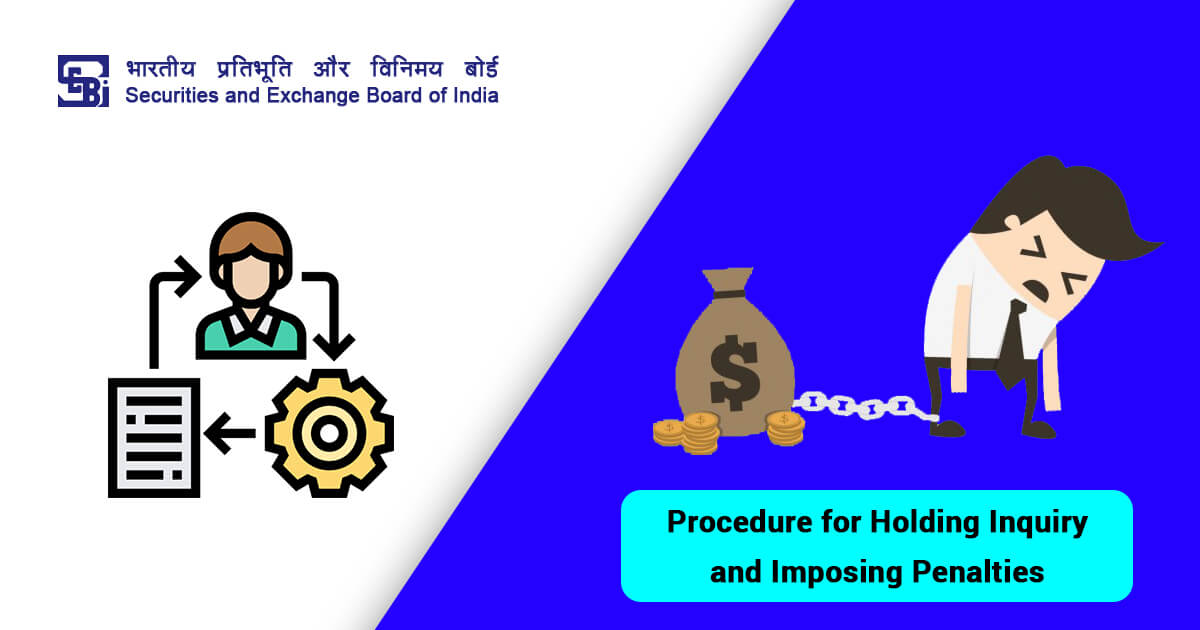SEBI Guidelines for IPO: Guidelines for Making Public Offer in India

Shivi Gupta | Updated: Jun 11, 2020 | Category: SEBI Advisory
Capital is the key for any company to support its operations financially and maintain its liquidity. At any stage of during its lifetime, a company may need more funds than the amount it which it started and therefore, plan to raise capital through the available options. The capital market of a country maintains a balance in the flow of funds in the economy, allowing companies to acquire funds in a more secure and regulated manner. A company that requires to raise funds can opt for the option of issuing its shares in the primary market and inviting the public to be its shareholders. This method of releasing a company’s securities is known as going public, and the same is regulated by the Securities Exchange Board of India. This blog talks about the different SEBI guidelines for IPO – initial public offer in India.
Table of Contents
Meaning of Public Issue/Offer
Public Offer or Public Issue is defined as the process of issuing securities of a company to new investors and making them a part of a company’s shareholders’ group. Public Offer is made to raise more funds and infuse more capital in the company for its financial needs and growth. Public Offer has been categorised as Initial Public Offer (IPO) and Further Public Offer (FPO).
Initial Public Offer (IPO)
When a company which is not yet listed on any stock exchange, i.e. it is an unlisted company and makes a fresh issue of its securities or an offer of its existing securities for sale for the first time to the public, it is known as an Initial Public Offer or IPO. IPO allows the company to list and trade its securities on the different stock exchanges and raise a large amount of capital.
Further Public Offer (FPO)
When a company which is already listed on a stock exchange, i.e. it is a listed company, and it makes a fresh issue of securities or an offer for sale to the public, it is known as Further Public Offer (FPO), or Follow-On Offer.
Benefits of Public Offer or Going Public
A company may opt for making a public offer or going public for numerous reasons such as business expansion, product development, debt repayment, targeting a new market, etc. The various benefits of making a public offer for a company are summarised below:
- To support and branch out the equity base of the company.
- To access an easier and affordable manner of raising capital.
- To boost the company’s image and goodwill in public.
- To provide liquidity to the company’s directors, employees and its pre-IPO investors.
- To enhance the company’s access to the equity market.
SEBI Guidelines for IPO in India
The Securities Exchange Board of India was established in 1988. It is the primary authority engaged in the regulation of Indian corporate securities market – primary market and the secondary market. Not only private entities, but also the commercial enterprises of the central government can enter the primary market to raise funds from the public to fulfil their financial requirements.
To ensure a healthy and transparent market, SEBI keeps on introducing changes to the process of Initial Public Offer – IPO. SEBI did not have any substantial powers to regulate the securities market until 1992, which was then regulated by the Controller of Capital Issues. When the Securities Exchange Board of India Act, 1992 was passed, SEBI was allotted numerous powers to regulate and supervise the securities market.
The SEBI – Securities Exchange Board of India (Issue of Capital and Disclosure Requirements) Regulations, 2009, otherwise known as the SEBI ICDR lays down the rules regarding the public offer in India. Additionally, the Securities Contract (Regulation) Act, 1957, the Securities Contract (Regulation) Rules, 1957 and the Companies Act, 2013 provide the legal compliances and process followed for filing an IPO.
The SEBI guidelines for IPO are divided into two processes – for unlisted companies and for listed companies.
SEBI Guidelines for IPO for Unlisted Companies
There are three different routes available to an unlisted company for making its initial public offer in India:
Profitability Route – Entry Norm 1
Under the profitability route, the following SEBI guidelines for IPO have to be followed:
- The minimum net worth of the issuer must be more than INR 1 Crore in each previous three years.
- The minimum net tangible assets of the issuer must be more than INR 3 Crores each, and not more than 50% of these assets must be held in the form of monetary assets in the previous three years.
- The minimum average operating profit (before tax) of the company must be more than INR 15 Crores in at least three out of five previous years.
- The issue size must not be more than five times the pre-issue net worth.
- If the company has changed its name, then a minimum of 50% of the revenue in the previous year must be received from activities done under the new name.
QIB Route – Entry Norm II
Companies that require a large capital base for their operations but are unable to fulfil the conditions laid down under the profitability route can choose the QIB route to make their public offer. Under the QIB Route, s company can access the public interest via the book-building procedure.
Under this process, 75% of the company’s net offer to the public must be allotted compulsorily to the Qualified Institutional Buyers (QIBs). If the company is unable to achieve the minimum subscription of QIB, it becomes liable to refund the subscription fee.
Appraisal Route – Entry Norm III
Under the appraisal route, the project or the public offer is appraised and participated to the extent of 15% by Financial Institutions or Scheduled Commercial Bank, of which, a minimum of 10% comes from the appraisers.
The appraisal route comes with the condition that the minimum post-issue face value capital must be INR 10 crores or a mandatory market-making must be there for at least two years.
All the above-mentioned entry norms also include the requirement of at least 1000 prospective allottees in the issuer company’s public issue.
SEBI Guidelines for Public Issue for Listed Companies
A listed company that wants to make a further public issue (FPO) fulfil the following SEBI guidelines:
- If the company has changed its name during the last one year, at least 50% of its revenue for the previous one year must be from the activities performed by the company under its new name.
- The size of its issue must not be more than five times the pre-issue net worth per the company’s audited balance sheet of its last financial year.
Exempted Entities under the SEBI Guidelines for IPO
SEBI has exempted certain kinds of entities from the above-mentioned entry norms for making a public issue. These entities include:
- Private and Public Sector Banks
- Infrastructure company which has its project appraised by a Public Financial Institution or IDFC or IL&FS or a bank which was previously a PFI, and at least 5% of its project cost is funded by any of these institutions. No entry norms are provided for a listed company that wants to make a rights issue.
Minimum Promoter’s Contribution and Lock-In
When an unlisted company makes a public issue, the promoters of the company must contribute at least 20% of the post-issue capital. This capital must be locked in for at least three years. This period is also called the lock-in period, which represents the freezing of such shares for that period. The remaining pre-issue capital of the company must also be locked in for a period of one year from the date of listing.
When a listed company makes a public issue in the form of Further Public Offer or FPO, the promoters of the company must contribute at least 20% of the post-issue capital or 20% of the total issue size. This requirement is in place to make sure that the promoters retain some part of the company’s stakes once the company makes its public offer.
General SEBI Guidelines for IPO
A company that wants to make a public offer must also adhere to the following general SEBI guidelines for IPO in India:
- The directors, promoters or other KMPs must not be associated with any other company in a similar role.
- The directors, promoters or any other key management personnel who have the control of the company must not be debarred from accessing the primary market.
- The application to list the company’s shares must be filed with a recognised stock exchange in India.
- The company must enter into legal contracts with a depository to dematerialise its specific securities.
- The partly paid-up equity shares must be fully paid-up.
- A listed company must maintain a minimum public shareholding of 25%. In case of failure to do so, the company gets one year to meet the requirement.
- A company must make financial arrangements from trust and verifiable sources for its financial requirements, excluding the amount put up to issue new company shares.
- The process of an initial public offer of more than INR 50 lakhs must start with the company filing a draft offer in the form of Draft Red Herring Prospectus with the SEBI.
- Once the draft is reviewed and received by the company along with the issue of final observation letter, the final offer document or the red herring prospectus must be filed with the Registrar of Companies (ROC).
- The company may choose the book building process under Entry Norm II. In this case, the company must complete the IPO process within one year from the date of receiving the final observation letter from SEBI.
- 50% of the Board of Directors of the company must be independent investors.
- The same 50% of the Board of Directors of the company must have no obligations to the promoters or the company.
- No directors or promoters of the company must be guilty of an economic offence.
- The company or any of its promoters or directors must not be a wilful defaulter.
- The issuer company must disclose the number of shares or the number of shares to SEBI between the date of filing its draft red herring prospectus and issue of specified securities.
- If a company wants to go for a public issue of more than INR 100 crores, it must submit a draft offer document with the regional office of SEBI before doing so.
SEBI Guidelines for Selling Shareholders
Selling shareholders are the current investors of the company who offer a certain amount of securities for sale during the initial public offer. Under the SEBI ICDR Regulations, 2018, the selling shareholders must provide the following information at the time of IPO:
- A statement must be provided on the front page of the offer document, laying down their responsibilities up to the extent of shares they want to offer at the time of the IPO.
- The pre-issue shareholding of the shareholder in the form of a percentage of the total paid-up capital.
- The weighted average price of securities at which they were acquired during the previous one year.
- The average cost of acquisition of shares of the company.
- Confirmation that the selling shareholder is not debarred by the SEBI or any other jurisdiction from accessing capital markets.
- Confirmation that the selling would comply with the Companies Rules, 2018.
Conclusion
Nonetheless, the shareholders must perform detailed due diligence before going for a company’s initial public offer, and at the same time, a company must follow all the regulations and SEBI guidelines for IPO before it makes its first public offer or ‘go public’.
Swarit Advisors provide end-to-end assistance to companies for their public issues – submission of application, registration with SEC, allotment of securities and additional guidance throughout the process. Consult our business experts to execute your initial public offer smoothly.
Read, Also:Cross Border Mergers and Acquisitions in India: A Complete Guide














